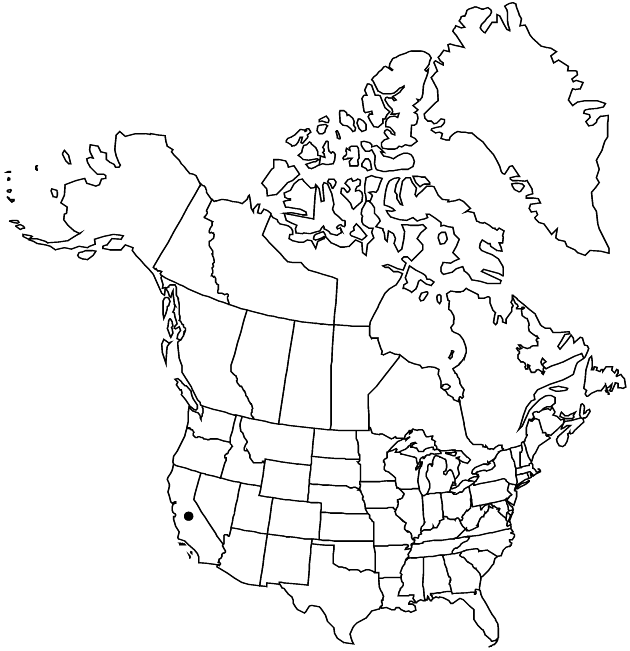Hulsea californica
in War Department [U.S.], Pacif. Railr. Rep. 6(3): 77. 1858.
Common names: San Diego alpinegold
EndemicConservation concern
Biennials or perennials, 40–120 cm. Stems (1–) 3–10, leafy, lanate to woolly. Leaves basal and cauline; blades gray to grayish green, broadly oblanceolate to spatulate, 6–10 cm, margins undulate to weakly lobed, faces densely lanate; distal cauline leaves lanceolate to narrowly obovate, gradually reduced. Heads 2–5. Involucres broadly conic to hemispheric, 15–26 mm diam. Phyllaries 9–14 mm, outer lanceolate, apices attenuate. Ray-florets 22–40; corolla-tubes glabrous, laminae yellow, 9–12 mm. Disc corollas yellow. Cypselae 4–6 mm; pappus-scales subequal, 1–2 mm. 2n = 38.
Phenology: Flowering late spring–summer.
Habitat: Often common after fires, open sites in chaparral and woodlands, mostly rocky, metamorphic soils
Elevation: 1000–2000 m
Discussion
Of conservation concern.
Hulsea californica grows in the eastern Peninsular Ranges, San Diego County.
Selected References
None.
Lower Taxa
None.
... more about "Hulsea californica"
introrse +
connate +
herbaceous +
attenuate +
scarious +
absent +
hirsute +
papillate +
corymbiform +
continuous +
decurrent +
broadly oblanceolate;spatulate +
winged;ribbed;winged;ribbed +
1;15 +
stigmatic +
6;80 +
absent +
San Diego alpinegold +
glabrous +
zygomorphic +
monomorphic +
dimorphic +
silky-hairy +
4mm;6mm +
staminate +
reduced +
Calif. +
straight +
lanate +
scabrellous +
distinct +
proximal +
1;5 +
bisexual +
dispersed +
singly +
Often common after fires, open sites in chaparral and woodlands, mostly rocky, metamorphic soils +
discoid +
indeterminate +
2;5 +
surrounding +
broadly conic;hemispheric +
yellow +
lanceolate +
2-carpellate +
inferior +
attached +
anatropous +
subequal +
persistent +
fragile +
falling +
equal +
tough +
thick +
absent +
connate +
persistent +
distinct +
falling +
unequal +
in War Department [U.S.], Pacif. Railr. Rep. +
1858 +
pistillate +
absent +
fertile +
epaleate +
pitted +
knobby +
fibrous +
distinct +
laciniate +
exalbuminous +
modifed +
2;4 +
alternate +
leafy +
erect +
2-branched +
papillate +
Hulsea californica +
Hulsea +
species +
cylindric +
equaling +
shorter +
longer +
